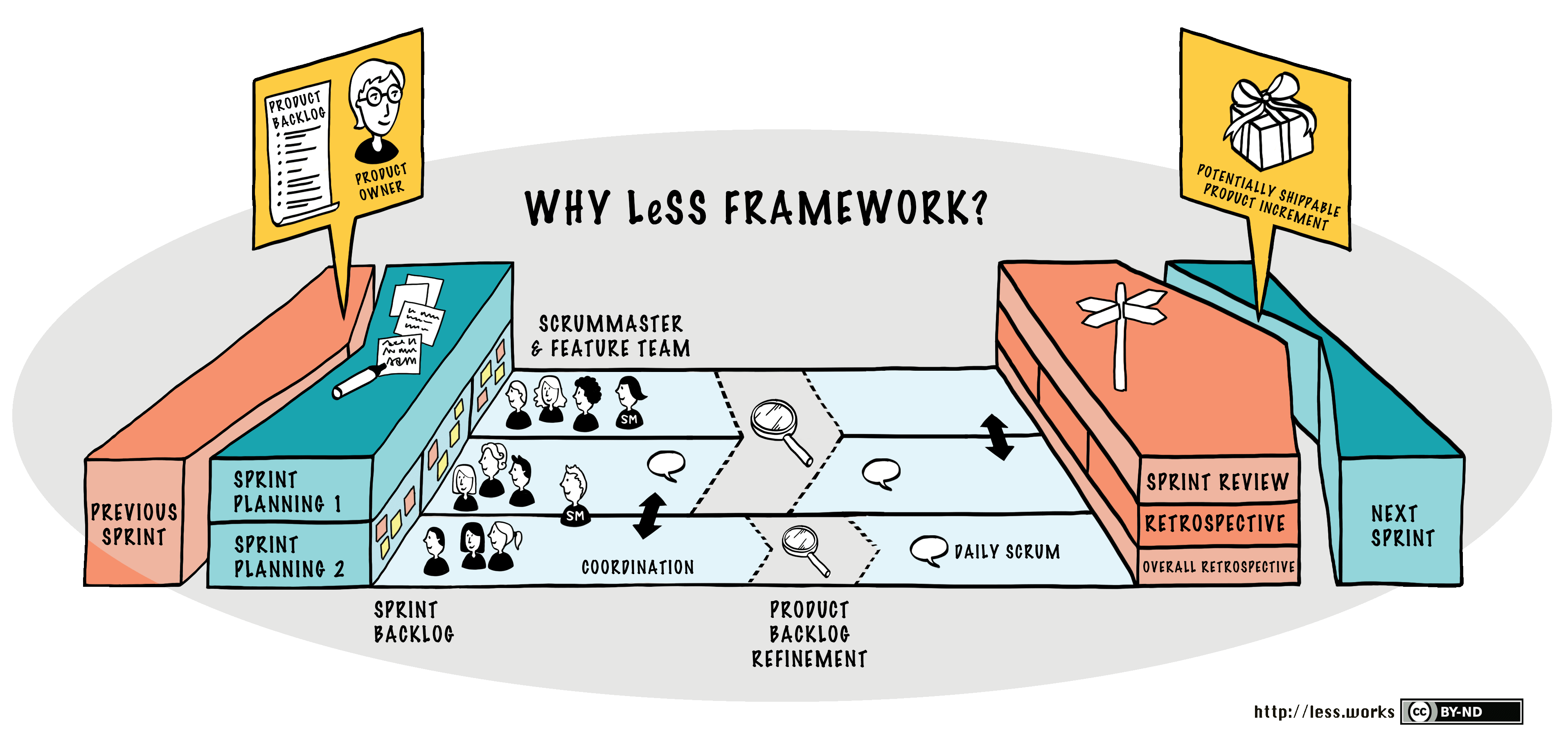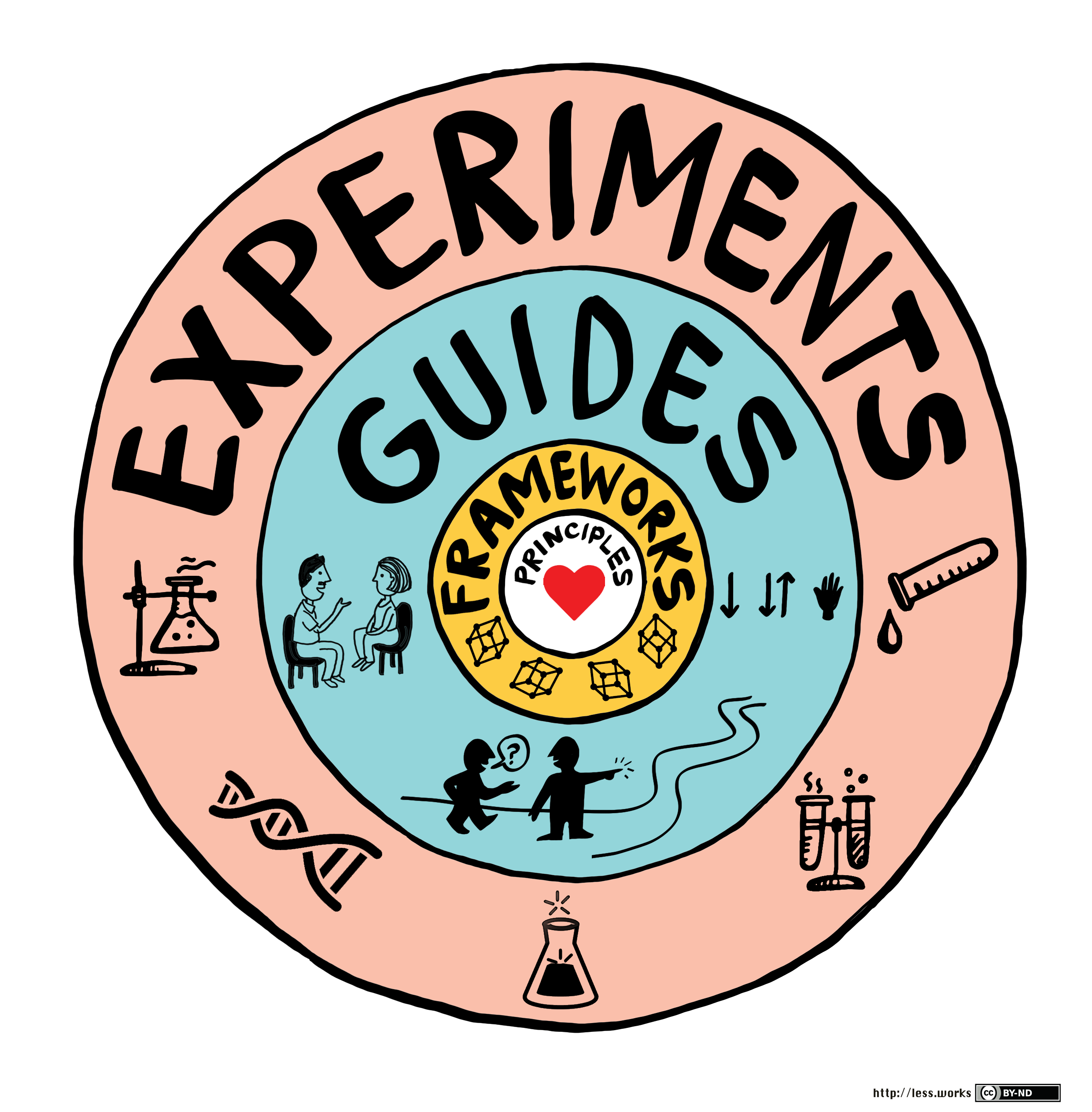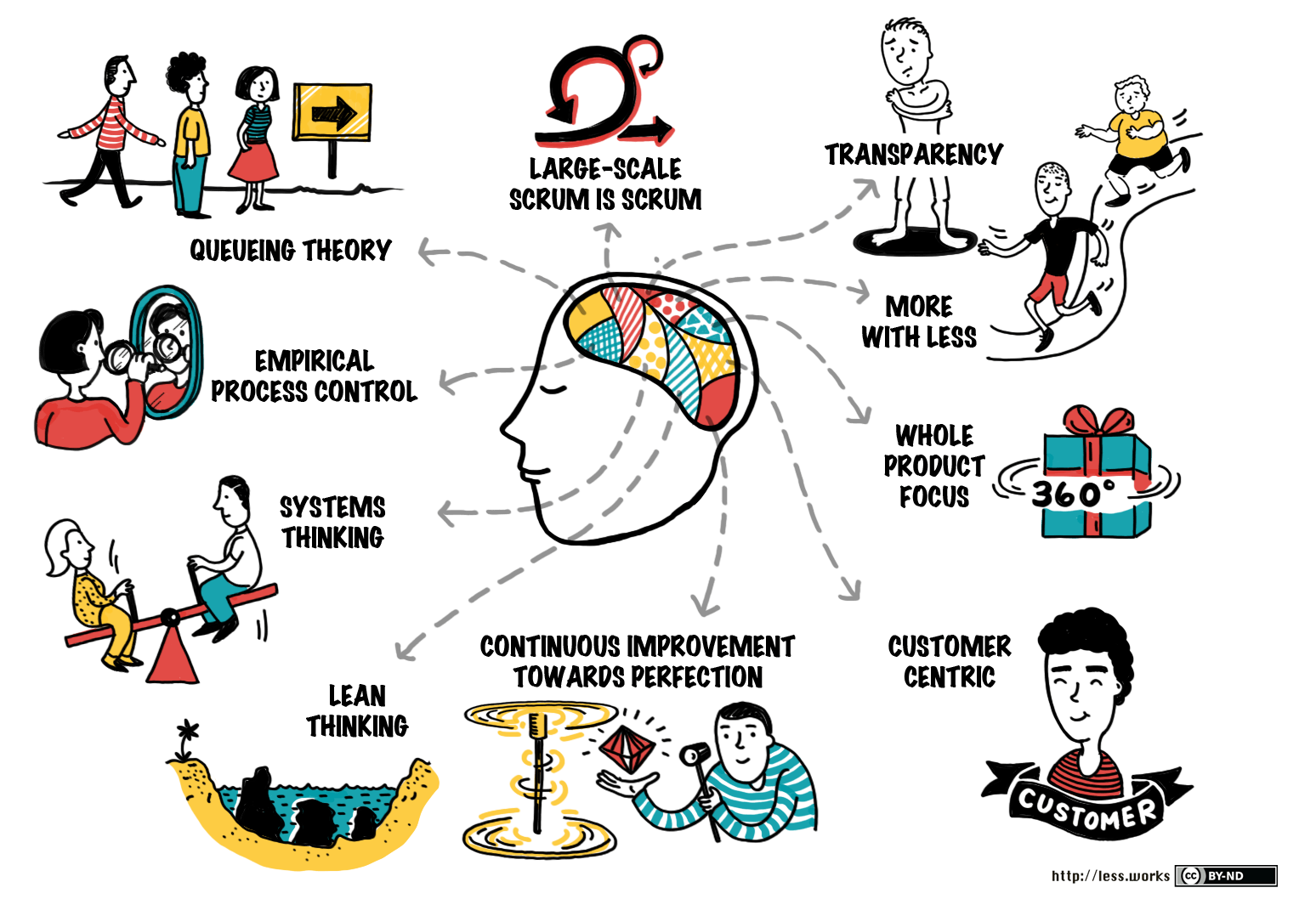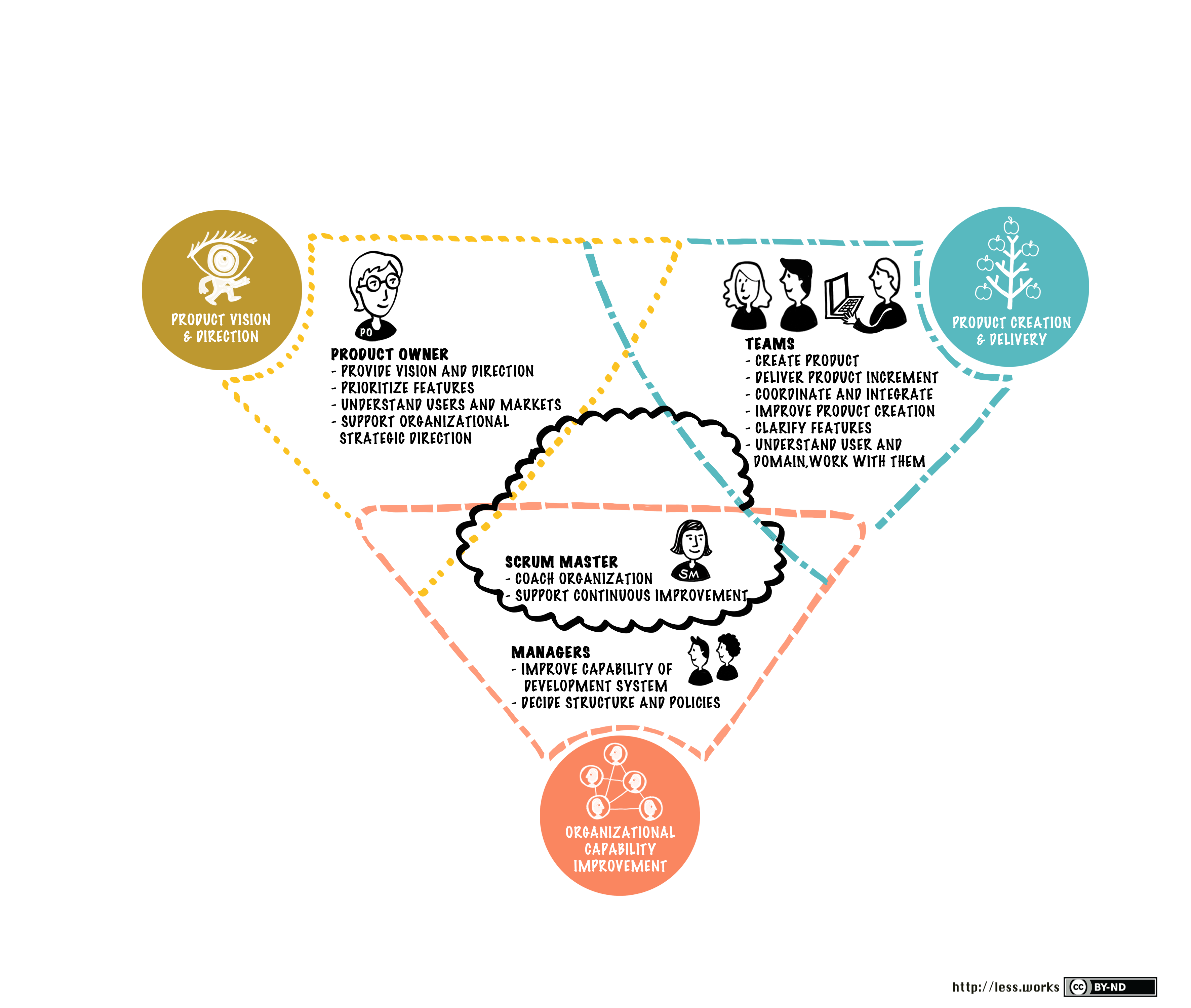- The Agile Coach
- Agile Manifesto
Agile project management
- Overview
- Project management intro
- Workflow
- Epics, stories, themes
- Epics
- User Stories
- Estimation
- Metrics
- Gantt chart
- Program management vs. project management
- Project baseline
- Continuous improvement
- Lean principles
- 3 pillars of Scrum
- Scrum Board
- Waterfall Methodology
- Velocity in Scrum
- What is Definition of Ready
- Lean vs. agile
- Scrumban
- Lean Methodology
- Sprint backlog
- Burn up chart
- 4 kanban principles
- 4 kanban metrics
- Program vs. Project Manager
- Gantt chart examples
- Definition of done
- Backlog grooming
- Lean process improvement
- Backlog refinement meetings
- Scrum values
- Scope of work
- Scrum tools
- Tools
- Workflow automation software
- Templates
- Task tracker
- Workflow automation
- Status report
- Workflow chart
- Project roadmap
- Project schedule
- Tracking software
- Roadmap tools
- Technology roadmap
- Project scheduling software
- Backlog management tools
- Understanding workflow management strategies
- Workflow examples
- Create project roadmap
- Sprint planning tools
- Sprint demo
- Project Timeline Software
- Top task management tools
- Product backlog vs. sprint backlog
- Top workflow management tools
- Project dependencies
- Task dashboard guide
- Sprint cadence
- Fast tracking
Product Management
- Overview
- Product Roadmaps
- Product Manager
- Tips for new product managers
- Roadmaps
- Tips for presenting product roadmaps
- Requirements
- Product analytics
- Product development
- Remote product management
- Minimal viable product
- Product discovery
- Product specification
- Product development strategy
- Product development software
- New product development process
- Product management KPIs
- Net Promoter Score (NPS)
- Product critique
- Prioritization frameworks
- Product features
- Product management tools
- Product Lifecycle Management
- 9 best roadmap software for teams
- Product launch checklist
- Product strategy
- Product engineering
- Product operations
- Portfolio management
- AI and product management
- Growth product management
- Product metrics
- Product release
- Feature request
- Product launch
- Product planning
- Product launch event
- Value Stream Management
- DevOps
Agile tutorials
- Overview
- Jira and Confluence sprint refinement
- How to do scrum with Jira
- Learn kanban with Jira
- Learn how to use Epics in Jira
- Learn how to create an agile board in Jira
- Learn how to use sprints in Jira
- Learn Versions with Jira
- Learn Issues with Jira
- Learn burndown charts with Jira
- Auto-create sub-tasks and update fields in Jira
- How to automatically assign issues with Jira Automation
- How to sync epics stories with Jira Automation
- Automatically escalate overdue issues in Jira
About the Agile Coach
- All articles
The Large-Scale Scrum (LeSS) framework
How LeSS applies the principles and ideals of scrum to the enterprise

By Thomas E. OConnor
By Thomas E. OConnor
Having worked in IT development and services across the healthcare, energy, manufacturing, software, financial services and insurance industries, Tom knows what large customers are up against when they undertake an agile transformation. He also knows that the agile journey is worth it; he’s done things the old way and have seen organizations struggle. And he’s witnessed the success that comes when you apply agile at scale and Lean Portfolio Management (LPM) to learning organizations. He’s so convinced that he’s even implemented agile practices at the Divide Fire Protection District in Divide, Colorado, where he was the fire chief for 13 years and a volunteer for just over 25 years. Tom spends much of his free time with family, youth sports, enjoying the outdoors on his dirt bikes, snowmobile and going to car shows with his 1968 Camaro SS. Want to know more? Reach out to Tom on LinkedIn.
Get started with the free DevOps template
Develop, deploy, and manage applications with an open tools approach within this customizable template.
Agile teams are made up of product owners, scrum masters, software developers, and others who work collaboratively to address complex problems through the creative delivery of valuable products.
Scrum is one of the more popular agile methodologies that teams use to develop, deliver, and sustain complex products. Yet only recently have we effectively addressed scaling scrum in the enterprise with scaled agile process frameworks like Large-Scale Scrum (LeSS).
What is the LeSS framework?

LeSS is a framework for scaling scrum to multiple teams who work together on a single product. It starts with a foundation of one scrum team, as defined by Ken Schwaber and Jeff Sutherland in the Scrum Guide, and applies to multiple teams who work together on one product.
This is further refined in the book Large-Scale Scrum: More with LeSS, by Craig Larman and Bas Vodde. The authors condensed their years of experience to define LeSS as a framework to deliver value while reducing complexity and waste.
The LeSS framework seeks to apply the principles and ideals of scrum in a large-scale enterprise context as simply as possible through defined rules and guides. Its simplicity has earned LeSS the label of being a “barely sufficient” framework, but that’s not meant to cast it in a negative light.
The LeSS framework structure
LeSS was forged through more than 600 experiments that involved expanding the practice of scrum, which at the time was thought to only support small, colocated groups. The LeSS experiments, guides, frameworks, and principles were created to support the needs of larger numbers of teams. In addition, LeSS rules were later released to better define and provide guidance on how to implement and execute LeSS and offer guides for adoption.
Principles, frameworks, guides, and experiments

Principles
LeSS defines 10 principles for applying the value, elements, and overall purpose of scrum across an enterprise. They help create more responsible teams with greater customer focus and collaboration. Teams focus on learning, transparency, and delivering customer-centric values that product organizations need to remain competitive and responsive. Here’s the complete list:
Large-Scale Scrum is scrum
Empirical process control
Transparency
More with less
Whole product focus
Customer-centric
Continuous improvement towards perfection
Systems thinking
Lean thinking
Queuing theory

Frameworks
LeSS offers two configurations: Basic LeSS for two to eight teams (10-50 people) and LeSS Huge for more than eight teams (50-6000+ people).
LeSS Huge starts with the Basic LeSS foundation in place and adds a key role – the area product owner (APO) – and additional artifacts and meeting changes. It’s recommended to start with Basic LeSS in your organization – to experiment, experience, and get feedback – before jumping straight into LeSS Huge. There are two suggested approaches to LeSS Huge adoption:
One requirement area at a time, focused on a requirement area within the larger product
Gradually expanding the scope of work of the team, definition of done, and the product definition
This allows an organization to build team experience with LeSS, expand throughout a product area, and gain management support, before scaling LeSS throughout the whole organization.
Guides
The LeSS guides are recommendations created by authors Craig Larman and Bas Vodde based on experiments conducted with LeSS. Although they were somewhat of an unintended byproduct of their third book “Large-Scale Scrum: More with LeSS”, they are very helpful in understanding ways to adopt LeSS, the roles and responsibilities of those involved, how to coordinate and integrate between teams, and more. Just note, the guides are optional in your application of the LeSS framework.
Experiments
LeSS includes experiments that the authors suggest some organizations try, others to avoid, and some that have had mixed results. The outcomes from experiments were foundational in the forming of the LeSS framework.
The first two books by Craig Larman and Bas Vodde – “Scaling Lean & Agile Development” and “Practices for Scaling Lean & Agile Development” – framed Large-Scale Scrum as a set of experiments with the principle: there are no such things as “best practices,” since best practices are always contextual to their environment.
The author’s third book, “Large-Scale Scrum:More with LeSS,” reveals guides for adopting LeSS, experiments from the first two books, clarification of roles in LeSS, how to coordinate and integrate between teams, and more.
All three books incrementally built the framework and are recommended readings to better understand the foundations of LeSS.
Roles and planning in LeSS
Basic LeSS focuses on the team and the key scrum roles: the scrum product owner who is responsible for the product vision and direction, scrum development teams who are responsible for product creation and delivery, and the scrum master who helps the team with continuous improvement and coaching. One area that LeSS expands upon is the role of the manager and how he/she assists the team with removing barriers for continuous improvement and autonomy.
As we described earlier, the area product owner of LeSS Huge assists and coordinates with the overall product owner and is critical to bridge the business needs with the technical team. The area product owner does the same work as the product owner, but with a more focused and limited scope for the team they support. The area product owner specializes in customer-focused tasks and acts as product owner for product-focused feature teams.

One of the key ceremonies described in scrum and further detailed in LeSS is the Product Backlog Refinement (PBR) meeting. PBR meetings expand sprint planning across the areas of focus through a set of parallel LeSS sprint executions. The ongoing cadence of these meetings is needed within each sprint to understand, discuss, and refine items to prepare for future sprints. The key activities of PBR meetings are: 1) breakdown big items, 2) clarify and answer the outstanding questions, and 3) estimate the size of the story, risks, dependencies, and values.
Aside from the importance of the sprint planning ceremony, the sprint review and retrospective are essential ceremonies to examine what the teams built and delivered, as well as discuss changes, improvements, and new ideas. It’s also an opportunity for the teams to celebrate the customer value they delivered. The inspect and adapt opportunity through retrospectives happen within each team as well as a retrospective that addresses how the team coordinated and collaborated.
What’s different in LeSS?
LeSS shares five main components akin to other frameworks for scaling agile: inspiration from the Agile Manifesto and its 12 principles, cadence through sprints/iterations, synchronization across the organization, its roots in scrum, and quality development practices such as DevOps, CI/CD and test-driven development (TDD). But there are other distinguishing characteristics that set it apart from the rest.
LeSS versus scrum
A common occurrence involves pitting LeSS versus scrum to determine which is best. However, this is not the right mindset to have. LeSS isn’t a “better” version of scrum; there simply isn’t a competition to be had or won. LeSS builds upon scrum to support its use in a larger context and how to scale it across larger organizations and beyond the one team.
Basic LeSS is very similar to one scrum team. In LeSS there is a single product backlog, product owner, and definition of done. And although comprised of one or more teams, all teams work together like a scrum team in order to deliver a common, shippable product at the end of each sprint. Despite having one product owner that owns a single product backlog, in LeSS the resulting work may be achieved by one or more teams. In LeSS Huge, in particular, the product owner role is expanded to include area product owners that coordinate and collaborate across many teams. To support these efforts, the product owner drives the single team product backlog refinement meeting, which helps align the delivery of the work across all the teams working together.
Beyond this, in LeSS, sprint planning is broken out into two parts: 1) all teams come together to decide how to best divide the product backlog items and 2) teams plan their sprint, while collaborating and communicating with other teams to deliver the product backlog items.
Aside from these points, other ceremonies such as the daily scrum, sprint review, and overall retrospective, have their own nuances in LeSS.
LeSS versus SAFe
Although LeSS is rising in popularity across enterprises with large software development teams, other scaled agile frameworks such as Scrum of Scrums or Scrum@Scale have also gained traction. One of the leading frameworks is the Scaled Agile Framework® (SAFe).
There are many similarities between LeSS and SAFe. For instance, both start with scaling a scrum team and incorporating principles such as lean thinking, continuous improvement, and customer-centricity. However, LeSS differs in that it focuses on simplifying organizational structure by remaining flexible and adaptable.
Contrary to LeSS, SAFe requires additional roles, including the Release Train Engineer (RTE), Solution Train Engineer (STE), and Epic Owners. It also includes processes, artifacts, and organizational changes that some organizations may not be ready to take on; even despite starting on equal footing with agile teams successfully running scrum. LeSS Huge does provide some differences of Basic LeSS, but for the most part is not as complex as other frameworks.
The benefits of the LeSS framework
The fundamental focus of LeSS is not to build a different framework, but to apply the principles of scrum to many teams who work together to deliver a complete end-to-end, customer-centric solution or product.
Some of the benefits that can be achieved with LeSS include:
Lower cost of implementation by implementing practices that teams already use in scrum
One product owner who understands the framework and principles, then bridges the gap between the business and the technical teams
Fewer people needed for the delivery of a product. LeSS does not exponentially add more roles and overhead
It provides an entire product view within the area of focus
Teams are in direct contact with the customer and the business stakeholders
Continuous improvement is enabled through frequent retrospectives and other meetings that are fundamental processes from the Agile Manifesto
For many organizations, the LeSS approach to scaling scrum teams may be the next logical step on their journey to scaling agile.
Taking the next step
Frameworks like LeSS provide a viable path to help businesses effectively scale agile within their organizations and achieve desired business outcomes. Just as important are the tools you choose to help amplify existing practices and realize the full benefits of those practices. With Atlassian’s enterprise agile planning platform, Jira Align, you can improve visibility, strategic alignment, and enterprise adaptability in order to accelerate your digital transformation. Discover how Jira Align supports LeSS today.
Related resources
- The Agile Coach
- Agile Manifesto
Agile project management
- Overview
- Project management intro
- Workflow
- Epics, stories, themes
- Epics
- User Stories
- Estimation
- Metrics
- Gantt chart
- Program management vs. project management
- Project baseline
- Continuous improvement
- Lean principles
- 3 pillars of Scrum
- Scrum Board
- Waterfall Methodology
- Velocity in Scrum
- What is Definition of Ready
- Lean vs. agile
- Scrumban
- Lean Methodology
- Sprint backlog
- Burn up chart
- 4 kanban principles
- 4 kanban metrics
- Program vs. Project Manager
- Gantt chart examples
- Definition of done
- Backlog grooming
- Lean process improvement
- Backlog refinement meetings
- Scrum values
- Scope of work
- Scrum tools
- Tools
- Workflow automation software
- Templates
- Task tracker
- Workflow automation
- Status report
- Workflow chart
- Project roadmap
- Project schedule
- Tracking software
- Roadmap tools
- Technology roadmap
- Project scheduling software
- Backlog management tools
- Understanding workflow management strategies
- Workflow examples
- Create project roadmap
- Sprint planning tools
- Sprint demo
- Project Timeline Software
- Top task management tools
- Product backlog vs. sprint backlog
- Top workflow management tools
- Project dependencies
- Task dashboard guide
- Sprint cadence
- Fast tracking
Product Management
- Overview
- Product Roadmaps
- Product Manager
- Tips for new product managers
- Roadmaps
- Tips for presenting product roadmaps
- Requirements
- Product analytics
- Product development
- Remote product management
- Minimal viable product
- Product discovery
- Product specification
- Product development strategy
- Product development software
- New product development process
- Product management KPIs
- Net Promoter Score (NPS)
- Product critique
- Prioritization frameworks
- Product features
- Product management tools
- Product Lifecycle Management
- 9 best roadmap software for teams
- Product launch checklist
- Product strategy
- Product engineering
- Product operations
- Portfolio management
- AI and product management
- Growth product management
- Product metrics
- Product release
- Feature request
- Product launch
- Product planning
- Product launch event
- Value Stream Management
- DevOps
Agile tutorials
- Overview
- Jira and Confluence sprint refinement
- How to do scrum with Jira
- Learn kanban with Jira
- Learn how to use Epics in Jira
- Learn how to create an agile board in Jira
- Learn how to use sprints in Jira
- Learn Versions with Jira
- Learn Issues with Jira
- Learn burndown charts with Jira
- Auto-create sub-tasks and update fields in Jira
- How to automatically assign issues with Jira Automation
- How to sync epics stories with Jira Automation
- Automatically escalate overdue issues in Jira
About the Agile Coach
- All articles
The Large-Scale Scrum (LeSS) framework
How LeSS applies the principles and ideals of scrum to the enterprise

By Thomas E. OConnor
By Thomas E. OConnor
Having worked in IT development and services across the healthcare, energy, manufacturing, software, financial services and insurance industries, Tom knows what large customers are up against when they undertake an agile transformation. He also knows that the agile journey is worth it; he’s done things the old way and have seen organizations struggle. And he’s witnessed the success that comes when you apply agile at scale and Lean Portfolio Management (LPM) to learning organizations. He’s so convinced that he’s even implemented agile practices at the Divide Fire Protection District in Divide, Colorado, where he was the fire chief for 13 years and a volunteer for just over 25 years. Tom spends much of his free time with family, youth sports, enjoying the outdoors on his dirt bikes, snowmobile and going to car shows with his 1968 Camaro SS. Want to know more? Reach out to Tom on LinkedIn.
Get started with the free DevOps template
Develop, deploy, and manage applications with an open tools approach within this customizable template.
Agile teams are made up of product owners, scrum masters, software developers, and others who work collaboratively to address complex problems through the creative delivery of valuable products.
Scrum is one of the more popular agile methodologies that teams use to develop, deliver, and sustain complex products. Yet only recently have we effectively addressed scaling scrum in the enterprise with scaled agile process frameworks like Large-Scale Scrum (LeSS).
What is the LeSS framework?

LeSS is a framework for scaling scrum to multiple teams who work together on a single product. It starts with a foundation of one scrum team, as defined by Ken Schwaber and Jeff Sutherland in the Scrum Guide, and applies to multiple teams who work together on one product.
This is further refined in the book Large-Scale Scrum: More with LeSS, by Craig Larman and Bas Vodde. The authors condensed their years of experience to define LeSS as a framework to deliver value while reducing complexity and waste.
The LeSS framework seeks to apply the principles and ideals of scrum in a large-scale enterprise context as simply as possible through defined rules and guides. Its simplicity has earned LeSS the label of being a “barely sufficient” framework, but that’s not meant to cast it in a negative light.
The LeSS framework structure
LeSS was forged through more than 600 experiments that involved expanding the practice of scrum, which at the time was thought to only support small, colocated groups. The LeSS experiments, guides, frameworks, and principles were created to support the needs of larger numbers of teams. In addition, LeSS rules were later released to better define and provide guidance on how to implement and execute LeSS and offer guides for adoption.
Principles, frameworks, guides, and experiments

Principles
LeSS defines 10 principles for applying the value, elements, and overall purpose of scrum across an enterprise. They help create more responsible teams with greater customer focus and collaboration. Teams focus on learning, transparency, and delivering customer-centric values that product organizations need to remain competitive and responsive. Here’s the complete list:
Large-Scale Scrum is scrum
Empirical process control
Transparency
More with less
Whole product focus
Customer-centric
Continuous improvement towards perfection
Systems thinking
Lean thinking
Queuing theory

Frameworks
LeSS offers two configurations: Basic LeSS for two to eight teams (10-50 people) and LeSS Huge for more than eight teams (50-6000+ people).
LeSS Huge starts with the Basic LeSS foundation in place and adds a key role – the area product owner (APO) – and additional artifacts and meeting changes. It’s recommended to start with Basic LeSS in your organization – to experiment, experience, and get feedback – before jumping straight into LeSS Huge. There are two suggested approaches to LeSS Huge adoption:
One requirement area at a time, focused on a requirement area within the larger product
Gradually expanding the scope of work of the team, definition of done, and the product definition
This allows an organization to build team experience with LeSS, expand throughout a product area, and gain management support, before scaling LeSS throughout the whole organization.
Guides
The LeSS guides are recommendations created by authors Craig Larman and Bas Vodde based on experiments conducted with LeSS. Although they were somewhat of an unintended byproduct of their third book “Large-Scale Scrum: More with LeSS”, they are very helpful in understanding ways to adopt LeSS, the roles and responsibilities of those involved, how to coordinate and integrate between teams, and more. Just note, the guides are optional in your application of the LeSS framework.
Experiments
LeSS includes experiments that the authors suggest some organizations try, others to avoid, and some that have had mixed results. The outcomes from experiments were foundational in the forming of the LeSS framework.
The first two books by Craig Larman and Bas Vodde – “Scaling Lean & Agile Development” and “Practices for Scaling Lean & Agile Development” – framed Large-Scale Scrum as a set of experiments with the principle: there are no such things as “best practices,” since best practices are always contextual to their environment.
The author’s third book, “Large-Scale Scrum:More with LeSS,” reveals guides for adopting LeSS, experiments from the first two books, clarification of roles in LeSS, how to coordinate and integrate between teams, and more.
All three books incrementally built the framework and are recommended readings to better understand the foundations of LeSS.
Roles and planning in LeSS
Basic LeSS focuses on the team and the key scrum roles: the scrum product owner who is responsible for the product vision and direction, scrum development teams who are responsible for product creation and delivery, and the scrum master who helps the team with continuous improvement and coaching. One area that LeSS expands upon is the role of the manager and how he/she assists the team with removing barriers for continuous improvement and autonomy.
As we described earlier, the area product owner of LeSS Huge assists and coordinates with the overall product owner and is critical to bridge the business needs with the technical team. The area product owner does the same work as the product owner, but with a more focused and limited scope for the team they support. The area product owner specializes in customer-focused tasks and acts as product owner for product-focused feature teams.

One of the key ceremonies described in scrum and further detailed in LeSS is the Product Backlog Refinement (PBR) meeting. PBR meetings expand sprint planning across the areas of focus through a set of parallel LeSS sprint executions. The ongoing cadence of these meetings is needed within each sprint to understand, discuss, and refine items to prepare for future sprints. The key activities of PBR meetings are: 1) breakdown big items, 2) clarify and answer the outstanding questions, and 3) estimate the size of the story, risks, dependencies, and values.
Aside from the importance of the sprint planning ceremony, the sprint review and retrospective are essential ceremonies to examine what the teams built and delivered, as well as discuss changes, improvements, and new ideas. It’s also an opportunity for the teams to celebrate the customer value they delivered. The inspect and adapt opportunity through retrospectives happen within each team as well as a retrospective that addresses how the team coordinated and collaborated.
What’s different in LeSS?
LeSS shares five main components akin to other frameworks for scaling agile: inspiration from the Agile Manifesto and its 12 principles, cadence through sprints/iterations, synchronization across the organization, its roots in scrum, and quality development practices such as DevOps, CI/CD and test-driven development (TDD). But there are other distinguishing characteristics that set it apart from the rest.
LeSS versus scrum
A common occurrence involves pitting LeSS versus scrum to determine which is best. However, this is not the right mindset to have. LeSS isn’t a “better” version of scrum; there simply isn’t a competition to be had or won. LeSS builds upon scrum to support its use in a larger context and how to scale it across larger organizations and beyond the one team.
Basic LeSS is very similar to one scrum team. In LeSS there is a single product backlog, product owner, and definition of done. And although comprised of one or more teams, all teams work together like a scrum team in order to deliver a common, shippable product at the end of each sprint. Despite having one product owner that owns a single product backlog, in LeSS the resulting work may be achieved by one or more teams. In LeSS Huge, in particular, the product owner role is expanded to include area product owners that coordinate and collaborate across many teams. To support these efforts, the product owner drives the single team product backlog refinement meeting, which helps align the delivery of the work across all the teams working together.
Beyond this, in LeSS, sprint planning is broken out into two parts: 1) all teams come together to decide how to best divide the product backlog items and 2) teams plan their sprint, while collaborating and communicating with other teams to deliver the product backlog items.
Aside from these points, other ceremonies such as the daily scrum, sprint review, and overall retrospective, have their own nuances in LeSS.
LeSS versus SAFe
Although LeSS is rising in popularity across enterprises with large software development teams, other scaled agile frameworks such as Scrum of Scrums or Scrum@Scale have also gained traction. One of the leading frameworks is the Scaled Agile Framework® (SAFe).
There are many similarities between LeSS and SAFe. For instance, both start with scaling a scrum team and incorporating principles such as lean thinking, continuous improvement, and customer-centricity. However, LeSS differs in that it focuses on simplifying organizational structure by remaining flexible and adaptable.
Contrary to LeSS, SAFe requires additional roles, including the Release Train Engineer (RTE), Solution Train Engineer (STE), and Epic Owners. It also includes processes, artifacts, and organizational changes that some organizations may not be ready to take on; even despite starting on equal footing with agile teams successfully running scrum. LeSS Huge does provide some differences of Basic LeSS, but for the most part is not as complex as other frameworks.
The benefits of the LeSS framework
The fundamental focus of LeSS is not to build a different framework, but to apply the principles of scrum to many teams who work together to deliver a complete end-to-end, customer-centric solution or product.
Some of the benefits that can be achieved with LeSS include:
Lower cost of implementation by implementing practices that teams already use in scrum
One product owner who understands the framework and principles, then bridges the gap between the business and the technical teams
Fewer people needed for the delivery of a product. LeSS does not exponentially add more roles and overhead
It provides an entire product view within the area of focus
Teams are in direct contact with the customer and the business stakeholders
Continuous improvement is enabled through frequent retrospectives and other meetings that are fundamental processes from the Agile Manifesto
For many organizations, the LeSS approach to scaling scrum teams may be the next logical step on their journey to scaling agile.
Taking the next step
Frameworks like LeSS provide a viable path to help businesses effectively scale agile within their organizations and achieve desired business outcomes. Just as important are the tools you choose to help amplify existing practices and realize the full benefits of those practices. With Atlassian’s enterprise agile planning platform, Jira Align, you can improve visibility, strategic alignment, and enterprise adaptability in order to accelerate your digital transformation. Discover how Jira Align supports LeSS today.
Related resources
Recommended for you
Templates
Ready-made Jira templates
Browse our library of custom Jira templates for various teams, departments, and workflows.
Product guide
A comprehensive introduction to Jira
Use this step-by-step guide to discover essential features and the best practices to maximize your productivity.
Git Guide
Understanding the Basics of Git
From beginners to advanced experts, use this guide to Git to learn the basics with helpful tutorials and tips.